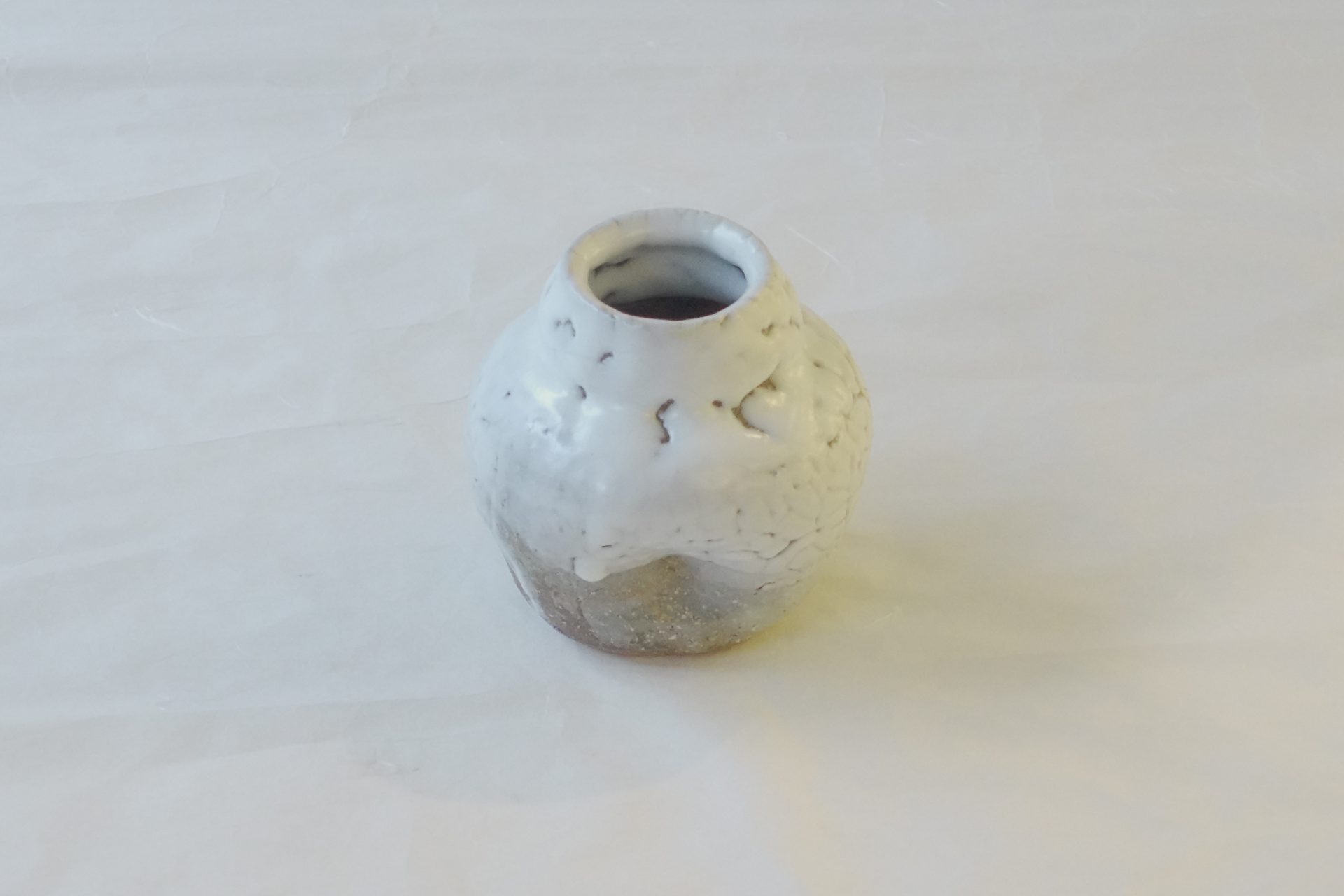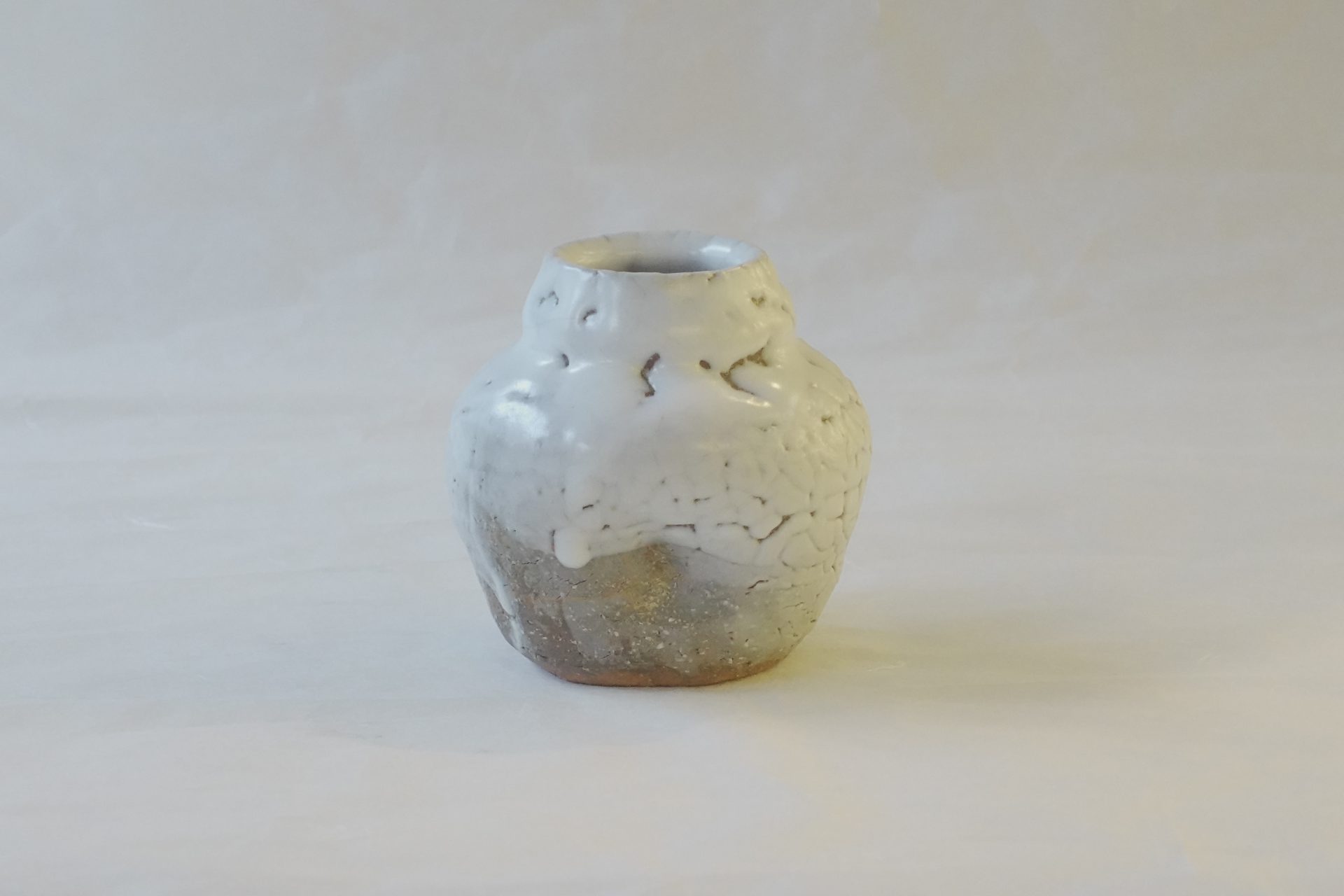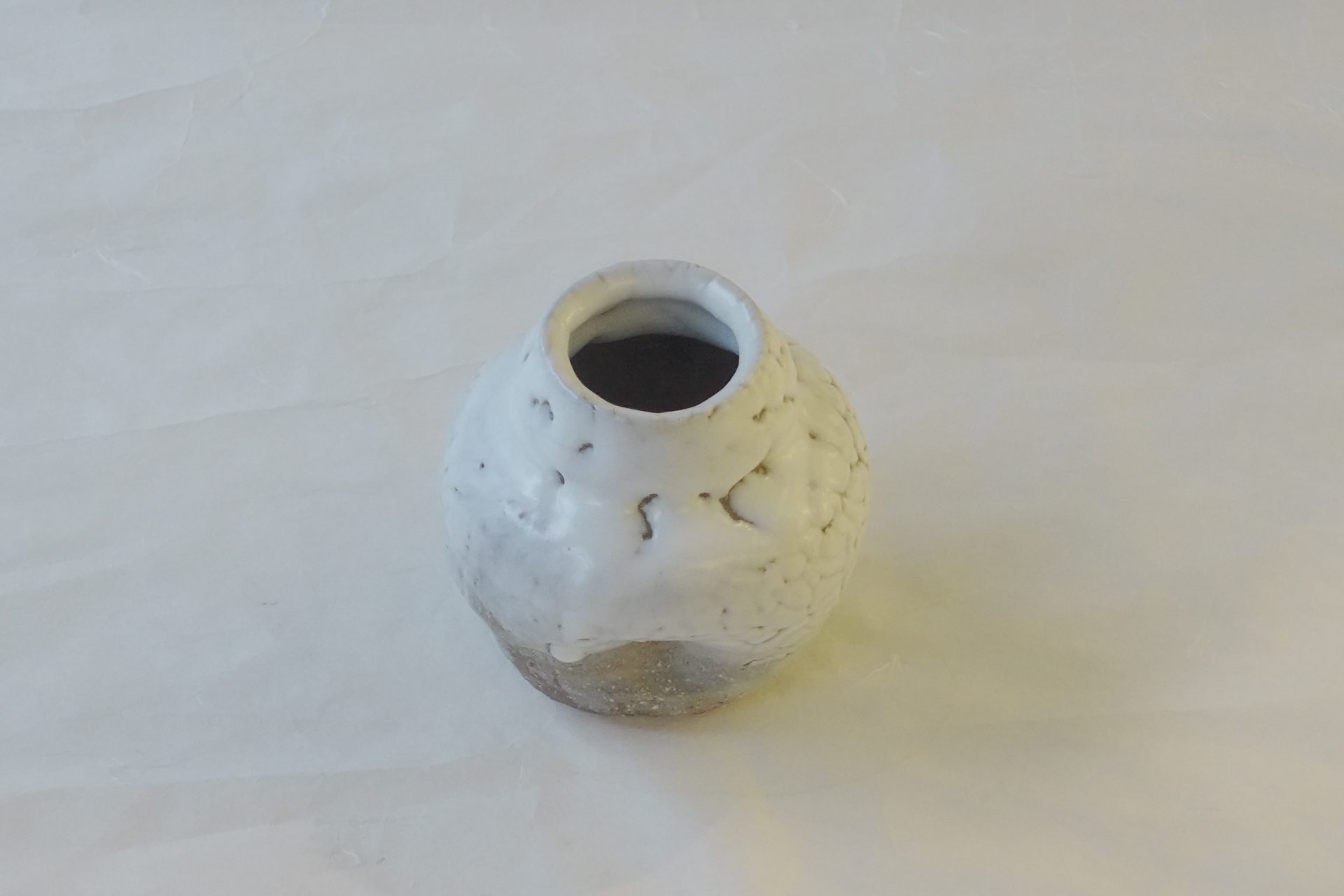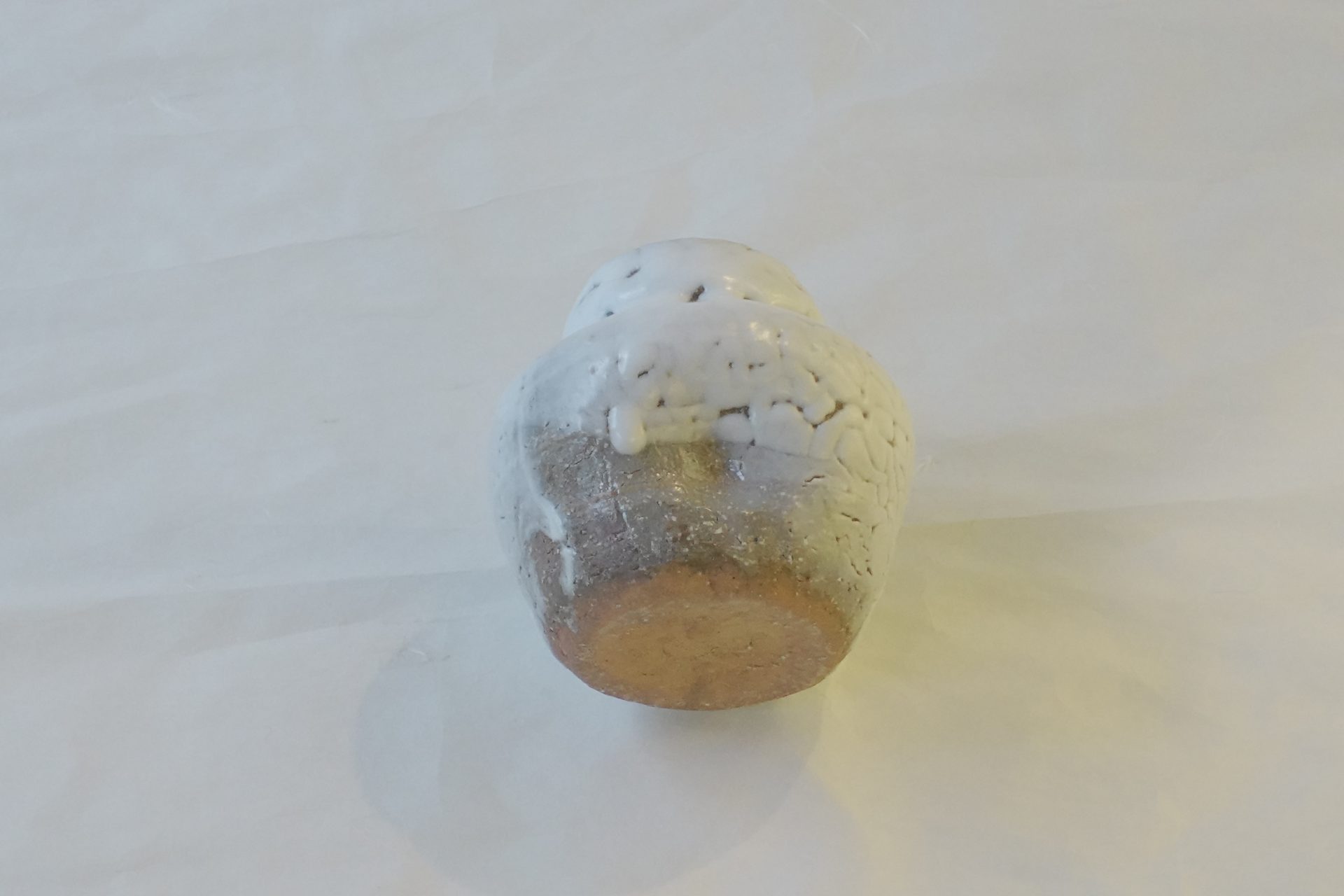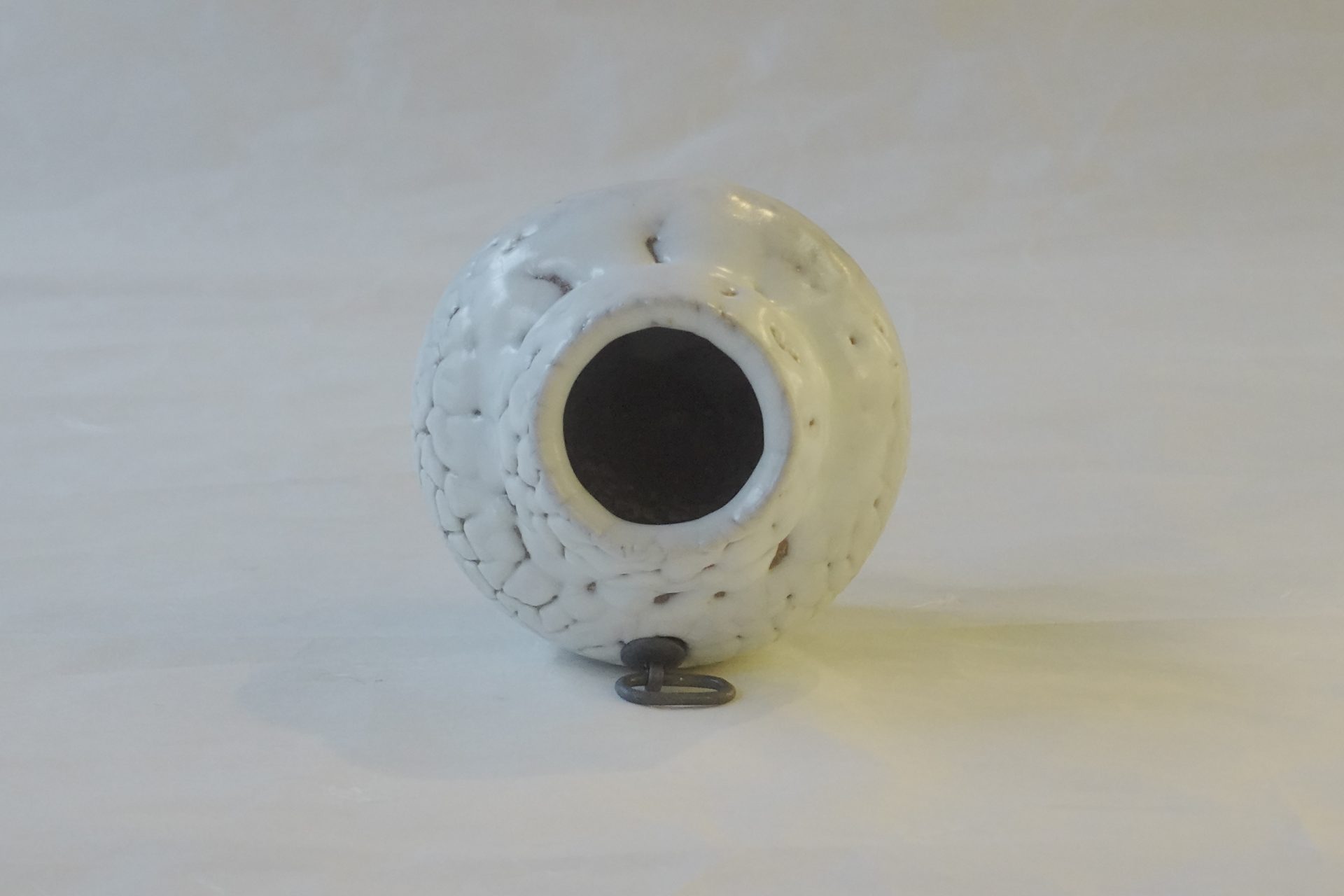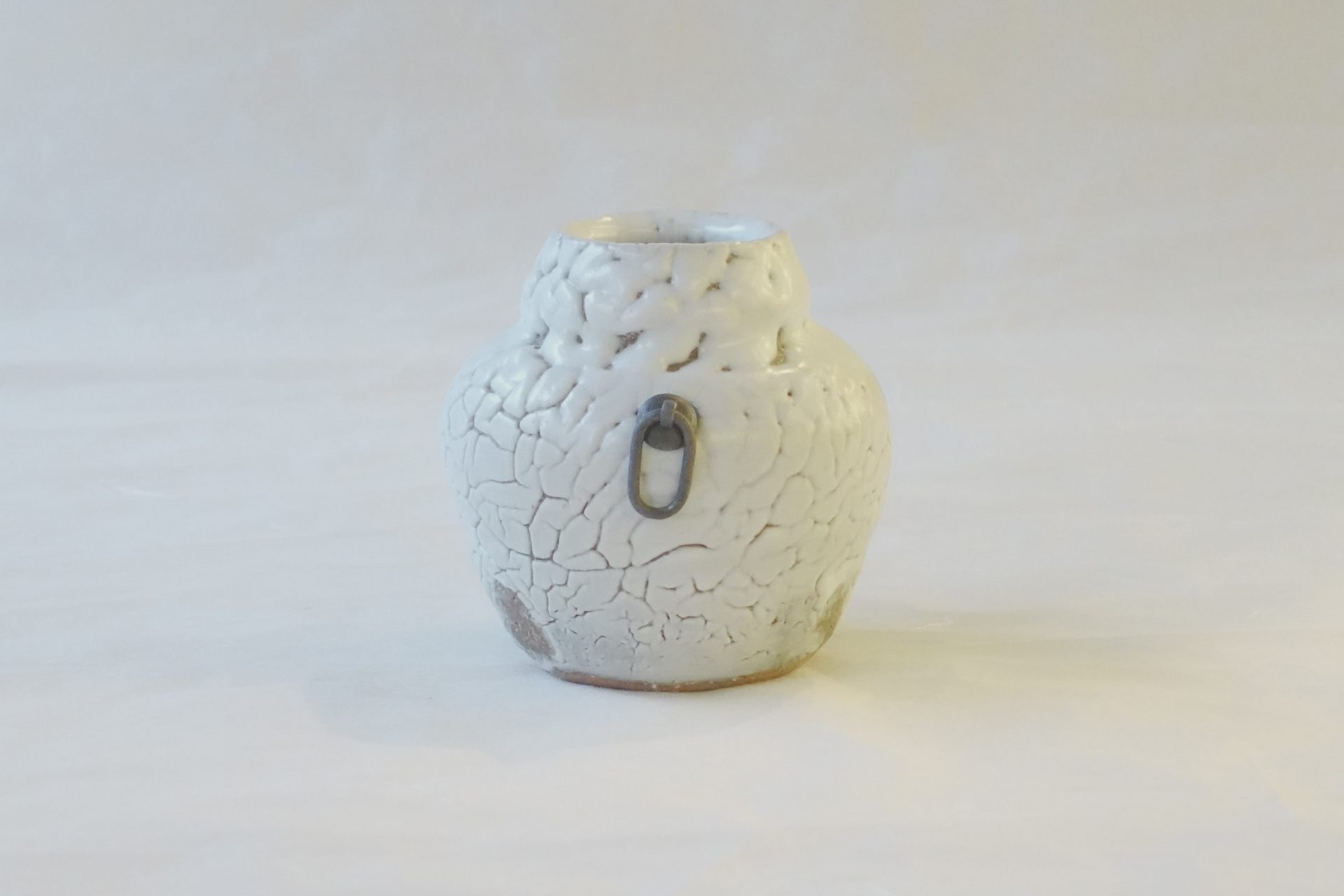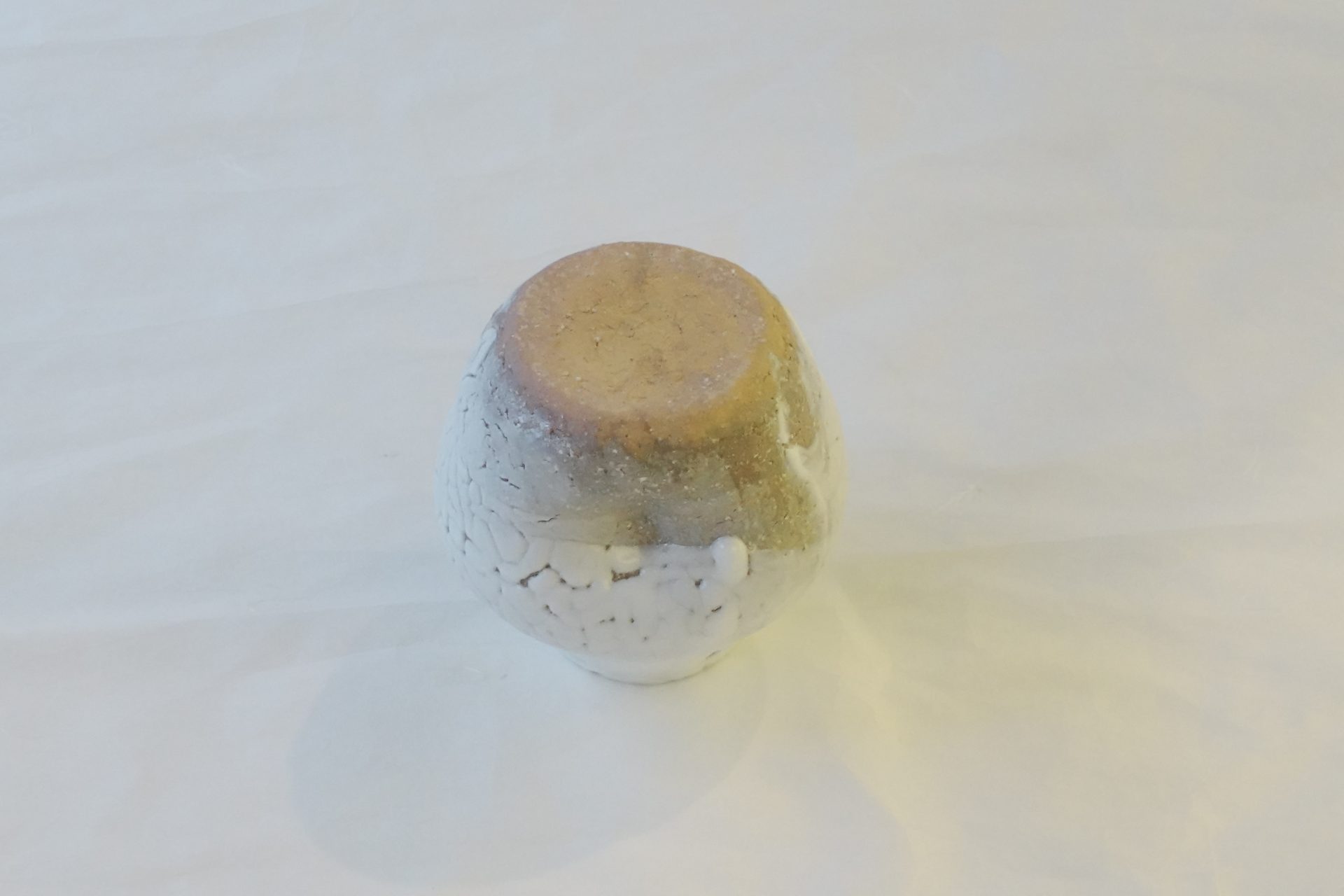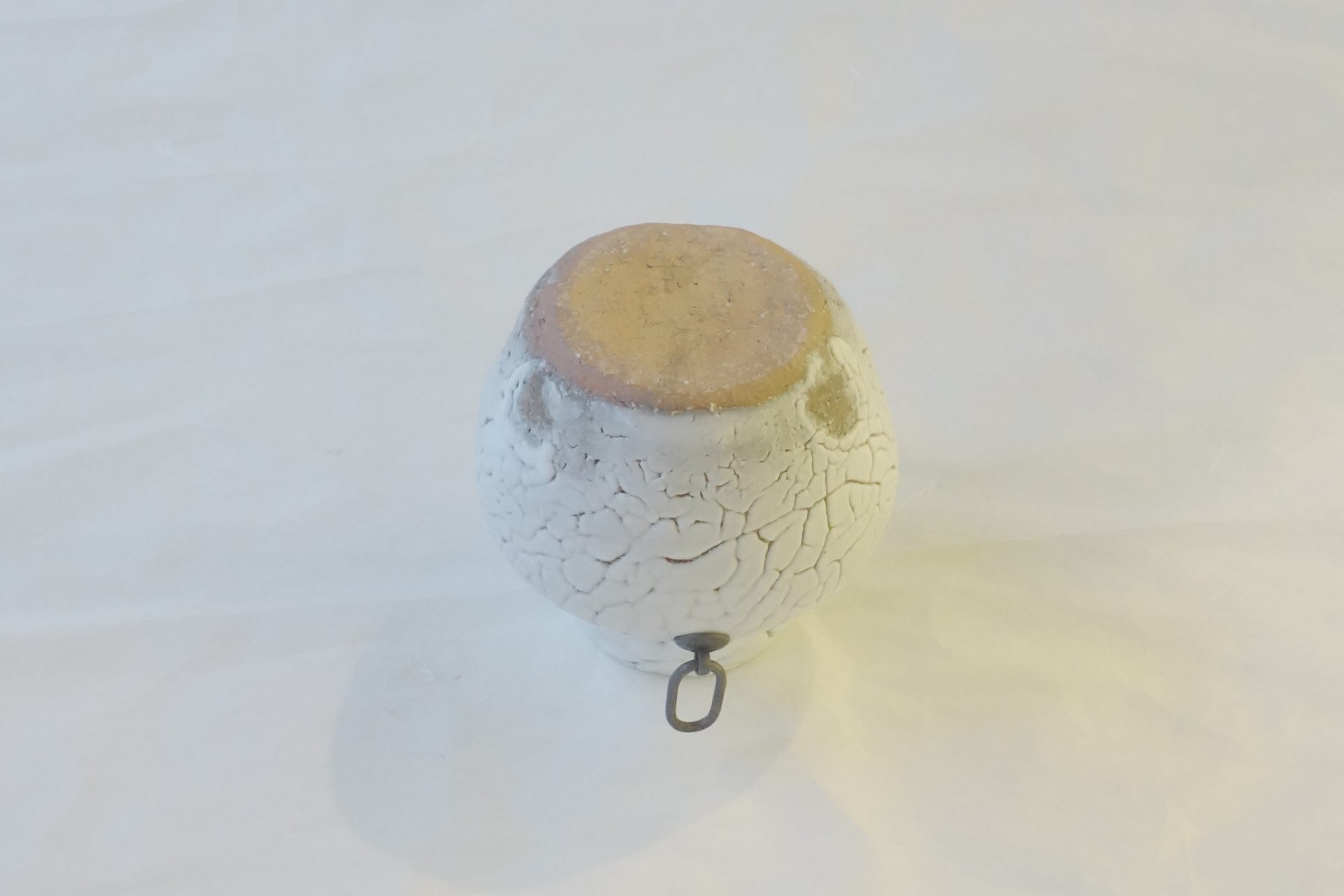径 9.3cm 高さ 9.3cm
Hagi Pottery Hanging Flower Vase by Kōyō Hayashi – White Hagi with “Kairagi” (Curling Glaze Effect), “Uzukumaru” Shape
Introducing a hanging flower vase by Kōyō Hayashi, made from Hagi pottery.
A hanging flower vase is a small vase designed to be hung on a wall, such as on a vertical pillar (suihatsu) or on the wall of a tea room, and is often used in the tea ceremony. However, it can also be casually hung and enjoyed in ordinary homes.
On the back of this flower vase, there is a metal hook that allows it to be easily hung on a nail if there is one in place on a vertical surface. Since the hook is attached to the back of the vase, it can also be placed on a surface, allowing flowers to be arranged in a standing position as well.
The shape of this flower vase is called “Uzukumaru,” which translates to “curling up” or “squatting.” The name is inspired by the posture of a person crouching or curling up. Originally, from the Muromachi period, these vases were used as bean containers, seed jars, or oil jars in farming households, and later, due to the tea practitioners’ preference, they were repurposed as hanging flower vases, continuing into modern times.
The most notable feature of this vase is its white “kairagi” effect. “Kairagi” refers to a granular texture formed when the glaze shrinks and creates a pitted surface. The term “kairagi” originally referred to the rough skin of a sword handle or “chōsame” (sharkskin), which has a similar texture to the irregular surface created by the shrinking glaze. In the world of the tea ceremony, “kairagi” is especially appreciated as a part of the landscape.
This particular vase is crafted from reddish-brown clay, thrown on the potter’s wheel, and glazed with white glaze. The glaze cracks in places, revealing the underlying clay, and the cracks themselves create a bold and powerful impression. The surface of the white glaze is marked with numerous fine cracks (called kannetsu), and the finish has a subdued, matte texture.
The lower part of the vase retains the marks left by the potter’s fingers when it was dipped in the glaze, adding to the charm of the piece and offering another layer of visual interest. The vase has a small indentation on the front, and its neck is pinched, making it easy to arrange flowers.
This vase creates a world of wabi-sabi, where just a few flowers can evoke the changing seasons and the beauty of the tea ceremony. It is ideal for small spaces, and with minimal flowers, it creates a unique and meditative atmosphere.
Dimensions:
Diameter: 9.3 cm
Height: 9.3 cm
萩烧 林红阳 制 白萩 海螺纹 蹲姿 挂花器
这是一款由林红阳创作的萩烧挂花器的介绍。
挂花器是一种小型花器,通常悬挂于垂撥(すいはつ)或茶室的床柱、墙面等地方,广泛用于茶道中,也适合在家庭中随意悬挂,带来花卉的乐趣。
该挂花器背面配有挂钩,可以将其挂在墙面或任何有钉子的垂直面上。由于挂钩位于花器背面,因此也可以将其放置在桌面上使用,插花时也同样方便。
这款挂花器的形状被称为“蹲”(うずくまる),意指其外形像是一个人蹲坐的姿势,因此得名。
这种形状最初是在室町时代作为农家的豆入、种子壶、油壶等日常用器出现,后来因茶人们的喜好,逐渐演变为挂花器,并传承至今。
这款挂花器的最大特色莫过于其白色的“海螺纹”(かいらぎ)装饰。
“海螺纹”指的是釉面收缩形成的颗粒状纹理。原本“海螺纹”是用来装饰刀剑的刀柄等部位的,它的表面由于釉药的收缩形成粗糙的纹理,类似于鲨鱼皮,因此被命名为“海螺纹”。
在茶道中,尤其是“海螺纹”被视为一种美丽的景致。
这款挂花器采用红土拉坯,表面覆盖白釉,部分釉层裂开,露出下面的土色,裂纹的分布大胆且富有力量感。白釉表面布满了细微的裂纹,给人一种质朴且温润的感觉。
花器底部留下了作家在浸釉时手指的痕迹,这也是一种景致,可以给人带来独特的美感。
正面有轻微的凹陷,口部收紧,方便插入花卉,使得花器更加适用于插花。
只需几枝花便能感受到季节的变化,展现出侘寂的茶道美学。它以少量的花卉和节省空间的方式,创造出独特的艺术氛围。
尺寸:直径 9.3cm 高 9.3cm

